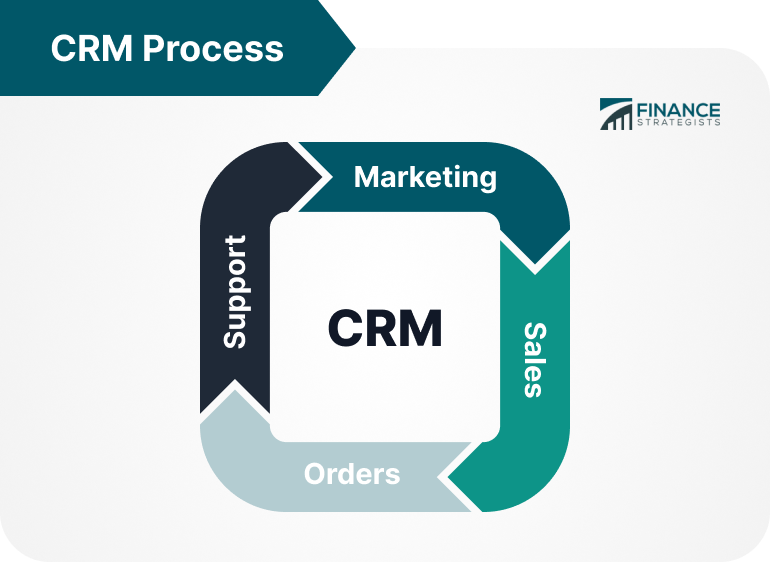Best CRM for contact management is crucial for business success. Effective contact management streamlines operations, improves customer relationships, and ultimately boosts profitability. This exploration delves into the key features, integration capabilities, and user experience considerations when selecting the optimal CRM solution for your specific business needs, whether you’re a small startup or a rapidly expanding enterprise. We’ll examine various platforms, highlighting their strengths and weaknesses to help you make an informed decision.
From defining your contact management needs and comparing different CRM platforms to understanding the importance of integration and automation, this guide provides a comprehensive overview. We’ll also discuss crucial aspects like user experience, scalability, and the long-term implications of your choice. By the end, you’ll have a clear understanding of how to choose the best CRM to manage your contacts effectively and efficiently.
Defining Contact Management Needs: Best Crm For Contact Management
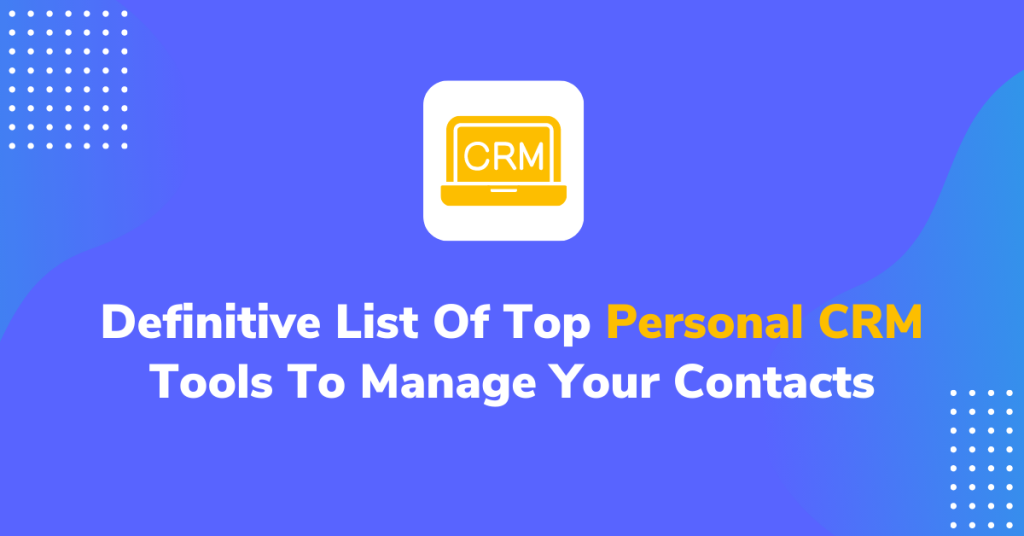
Effective contact management is crucial for any business, regardless of size or industry. A well-organized system allows for efficient communication, streamlined sales processes, and ultimately, improved customer relationships. Choosing the right CRM hinges on understanding your specific needs and how a system can help you achieve your business goals.Effective contact management streamlines operations and fosters stronger customer relationships.
Failing to properly manage contacts can lead to missed opportunities, duplicated efforts, and a generally less efficient workflow. Investing time upfront to define your needs will pay dividends in the long run by ensuring you select a CRM that truly fits your business.
Essential Features for Effective Contact Management in Small Businesses
Three key features are essential for effective contact management in a small business: a robust contact database, automated communication tools, and reporting and analytics capabilities. These features, while seemingly basic, provide the foundation for a streamlined and efficient contact management system.
- Robust Contact Database: A well-structured database allows for easy storage and retrieval of all relevant contact information, including names, contact details, communication history, and purchase history. This central repository eliminates data silos and ensures everyone in the company has access to the most up-to-date information.
- Automated Communication Tools: Features like automated email marketing campaigns, personalized email sequences, and appointment scheduling can significantly improve efficiency and engagement. Automating routine tasks frees up time for more strategic activities.
- Reporting and Analytics Capabilities: The ability to generate reports on key metrics such as contact engagement, sales conversions, and customer lifetime value provides valuable insights into the effectiveness of your contact management strategy. Data-driven decisions lead to better outcomes.
Differences in Contact Management Needs: B2B vs. B2C
The needs for contact management differ significantly between business-to-business (B2B) and business-to-consumer (B2C) companies. B2B typically involves longer sales cycles and more complex relationships, requiring a more detailed approach to contact management. B2C, on the other hand, often focuses on large-scale marketing and shorter sales cycles.
| Feature | B2B | B2C |
|---|---|---|
| Sales Cycle Length | Longer, often involving multiple stakeholders | Shorter, often a single purchase decision |
| Relationship Focus | Building strong, long-term relationships with key accounts | Managing a large volume of individual customers |
| Communication Channels | Email, phone, in-person meetings, social media | Email, SMS, social media, online advertising |
| Data Focus | Detailed company information, contact roles, and purchase history | Customer demographics, purchase history, and preferences |
The Importance of Data Security and Privacy in Choosing a CRM for Contact Management
Data security and privacy are paramount when selecting a CRM. Storing sensitive customer information necessitates a system with robust security measures to protect against data breaches and unauthorized access. Compliance with relevant data privacy regulations, such as GDPR and CCPA, is also critical. Choosing a CRM provider with a strong security track record and a commitment to data privacy is essential for maintaining customer trust and avoiding legal repercussions.
A reputable provider will have clear policies outlining their security protocols and data protection measures. For example, they might employ encryption, regular security audits, and access controls to protect customer data. Failure to prioritize data security can lead to significant financial and reputational damage.
CRM Software Features for Contact Management
Choosing the right CRM for contact management hinges on understanding the specific features offered by different platforms. Effective contact management goes beyond simply storing contact details; it involves streamlining communication, tracking interactions, and leveraging data for improved business relationships. This section will delve into the core features and compare the capabilities of several popular CRM systems.
Comparison of Contact Management Capabilities in Three Popular CRMs
Three leading CRM platforms – Salesforce, HubSpot, and Zoho CRM – offer robust contact management capabilities, but each has its strengths and weaknesses. Salesforce, known for its scalability and customization options, provides advanced features like contact segmentation and predictive analytics for targeted outreach. HubSpot, particularly strong in marketing automation, seamlessly integrates contact management with its marketing tools, allowing for sophisticated lead nurturing and campaign tracking.
Zoho CRM, a more affordable option, provides a comprehensive set of features at a competitive price point, though its customization options may be less extensive than Salesforce. The optimal choice depends heavily on the size and specific needs of the business.
Five Must-Have Features for Contact Management-Focused CRM Systems
A CRM system optimized for contact management should include several key features to maximize efficiency and effectiveness.
The following five features are essential:
- Comprehensive Contact Profiles: These profiles should allow for the storage of a wide range of information beyond basic contact details, including communication history, purchase history, interaction notes, and custom fields tailored to specific business needs. This holistic view of each contact is crucial for personalized engagement.
- Contact Segmentation and Grouping: The ability to segment contacts based on various criteria (e.g., demographics, purchase behavior, engagement level) allows for targeted marketing campaigns and personalized communication. This feature is vital for optimizing marketing ROI and enhancing customer relationships.
- Integrated Communication Tools: Seamless integration with email, phone, and social media platforms streamlines communication and ensures consistent engagement. This minimizes context switching and improves response times.
- Activity Tracking and Reporting: Tracking interactions with contacts – emails sent, calls made, meetings scheduled – provides valuable insights into customer engagement and allows for timely follow-up. Comprehensive reporting capabilities enable data-driven decision-making and performance optimization.
- Workflow Automation: Automating repetitive tasks, such as sending follow-up emails or assigning leads, frees up valuable time and resources. This improves efficiency and ensures consistent engagement across all contacts.
CRM Pricing Model Comparison, Best crm for contact management
Understanding the pricing structures of different CRMs is critical for budget planning. The following table compares the pricing models of five popular CRM systems. Note that pricing can vary based on the number of users, features included, and specific plan selected.
| CRM System | Pricing Model | Starting Price (USD/month) | Notes |
|---|---|---|---|
| Salesforce Sales Cloud | Subscription | 25 | Prices vary significantly based on user needs and add-ons. |
| HubSpot CRM | Freemium | 0 (Free Plan) | Paid plans offer expanded features and support. |
| Zoho CRM | Subscription | 14 | Multiple tiers available with varying features and user limits. |
| Microsoft Dynamics 365 | Subscription | 65 | Pricing varies widely depending on the modules selected. |
| Pipedrive | Subscription | 14.90 | Simple pricing structure with clear tiers and features. |
Integration and Automation Capabilities

Effective contact management relies heavily on seamless integration with other business tools and the implementation of automated workflows. Integrating your CRM with other platforms and automating repetitive tasks significantly improves efficiency, reduces manual errors, and ultimately boosts your team’s productivity. This section will explore the advantages of such integration and provide examples of how automation can streamline your contact management processes.Integrating a CRM with email marketing platforms offers a powerful synergy for refined contact management.
This integration allows for a more holistic view of your customer interactions, enabling personalized marketing campaigns and improved customer relationship nurturing. By connecting your CRM to your email marketing platform, you can segment your contacts based on CRM data (like purchase history or engagement levels), allowing for targeted email campaigns that resonate better with specific customer groups. This leads to higher engagement rates, improved conversion rates, and a stronger overall return on investment (ROI) for your marketing efforts.
Benefits of CRM and Email Marketing Platform Integration
By linking your CRM and email marketing platform, you gain access to a wealth of data-driven insights. For example, you can track email open rates and click-through rates directly within your CRM, providing a comprehensive understanding of how your email campaigns are performing. This integrated view allows for more effective campaign optimization and helps refine your marketing strategies based on real-time data.
Further, automated email sequences triggered by CRM events (like a new contact signup or a purchase) provide personalized, timely communications that enhance customer engagement and loyalty. Imagine an automated welcome email sent immediately after a customer signs up for your newsletter, or a follow-up email sent after a purchase, offering related products or asking for feedback. These automated interactions create a seamless and positive customer experience.
Examples of Automation Workflows for Improved Contact Management
Automation within a CRM can significantly reduce the time spent on manual tasks, freeing up your team to focus on more strategic initiatives. Consider these examples:
- Automated Lead Scoring: Based on predefined criteria (website visits, email opens, form submissions), leads are automatically scored, prioritizing high-potential prospects for immediate follow-up by sales.
- Automated Contact Segmentation: Contacts are automatically categorized into different segments based on demographics, purchase history, or engagement levels, facilitating targeted marketing campaigns and personalized communications.
- Automated Task Assignment: When a new lead is generated or a contact updates their information, tasks are automatically assigned to the appropriate team member, ensuring timely follow-up and preventing task slippage.
- Automated Email Sequences: Pre-defined email sequences are automatically triggered based on specific events or actions, providing timely and relevant communications to nurture leads and strengthen customer relationships.
These examples highlight how automation streamlines workflows, leading to increased efficiency and improved customer engagement.
Automating Contact Updates: A Step-by-Step Guide
Let’s illustrate how to automate contact updates using a hypothetical CRM called “ContactFlow.”
- Identify the Trigger: Determine the event that will initiate the automation. For example, a contact updating their email address in their profile.
- Define the Action: Specify the action to be performed. In this case, it would be updating the contact’s information in the CRM database and sending a confirmation email.
- Configure the Workflow: Within ContactFlow, navigate to the “Automation” section and create a new workflow. Select the “Contact Update” trigger and define the action – updating the contact’s information and sending a confirmation email.
- Test the Workflow: Thoroughly test the workflow to ensure it functions correctly and updates the contact’s information accurately. Simulate a contact updating their information to verify the automation.
- Deploy the Workflow: Once tested, activate the workflow so it automatically updates contact information whenever the defined trigger event occurs.
This process demonstrates the relative simplicity of automating contact updates, leading to more accurate and up-to-date contact information within the CRM. Similar workflows can be designed for other contact-related events, further enhancing the efficiency of contact management.
User Experience and Support
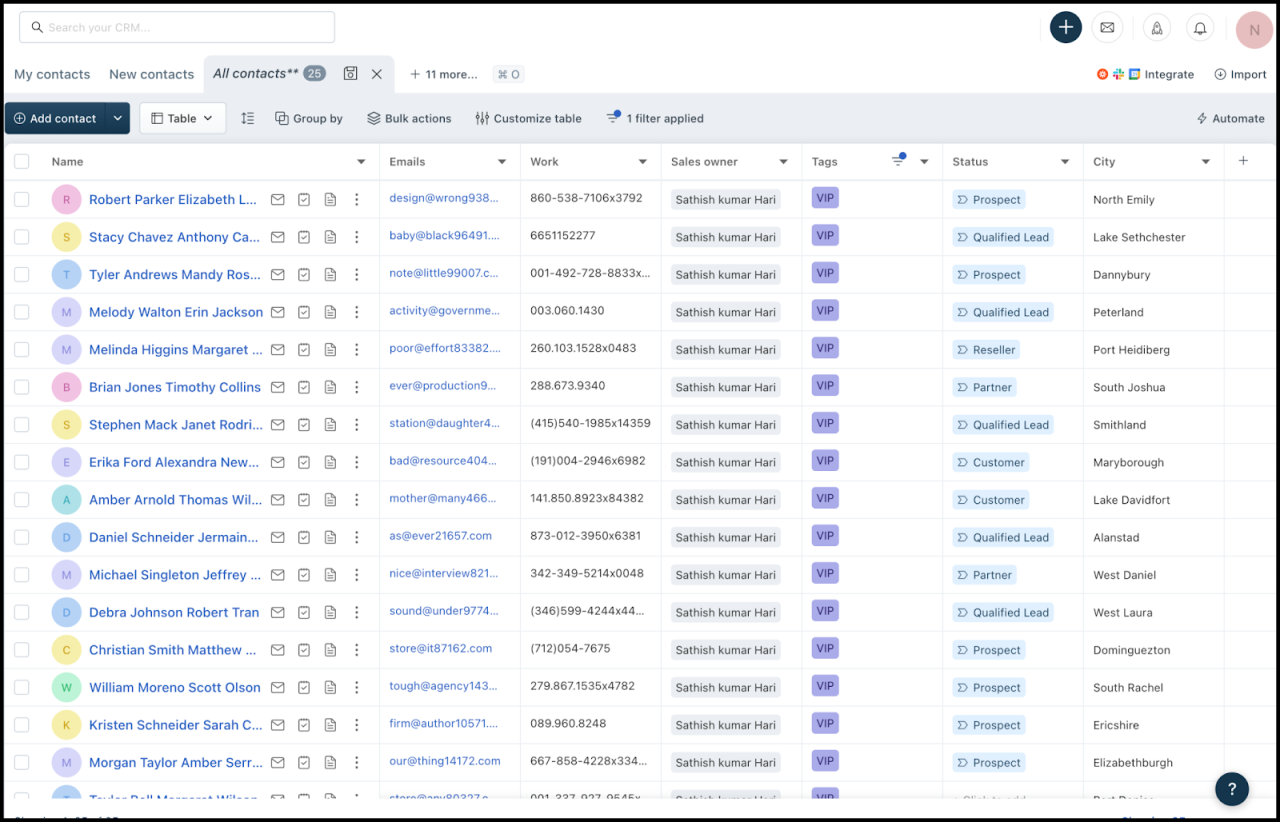
Choosing the right CRM for contact management involves more than just feature comparison; the user experience and the support system play a crucial role in determining long-term success and user adoption. A CRM that is difficult to navigate or lacks adequate support will hinder productivity and ultimately fail to deliver its promised benefits. A smooth and intuitive user experience, coupled with readily available and effective support, is essential for maximizing the return on investment.A positive user experience significantly impacts team productivity and overall satisfaction.
Intuitive design elements reduce the learning curve, allowing users to quickly master the system and focus on core tasks rather than struggling with the software itself. Robust customer support ensures that any challenges encountered are addressed promptly and efficiently, minimizing downtime and frustration.
CRM User Interface Comparison
Three popular CRMs—Salesforce, HubSpot, and Zoho CRM—offer distinct user interfaces. Salesforce, known for its comprehensive features, presents a more complex interface that may require a steeper learning curve. Its customizable dashboards and extensive reporting tools, while powerful, can feel overwhelming for new users. HubSpot, aiming for user-friendliness, boasts a cleaner and more intuitive interface, especially beneficial for smaller businesses or those new to CRM systems.
Navigation is generally straightforward, with features clearly organized. Zoho CRM sits somewhere in between, offering a balance of functionality and ease of use. Its interface is relatively clean and organized, but may lack the visual appeal of HubSpot or the extensive customization options of Salesforce. The best choice depends on the specific needs and technical expertise of the team.
Importance of Customer Support and Training Resources
Comprehensive customer support and accessible training resources are paramount when selecting a CRM. Effective training ensures users understand the system’s functionalities and best practices, maximizing its potential from the outset. Prompt and helpful support minimizes disruption caused by technical issues or user confusion. Consider the availability of various support channels (phone, email, chat, knowledge base) and the responsiveness of the support team.
For example, a CRM with readily available online tutorials, webinars, and a comprehensive FAQ section can significantly reduce the need for direct support interactions. A strong support system translates to increased user confidence and faster adoption rates, ultimately leading to a higher return on investment.
Features Contributing to a Positive User Experience
Several features contribute significantly to a positive CRM user experience. Intuitive navigation, such as clear menus, easily searchable data, and customizable dashboards, allows users to quickly find and access the information they need. Personalized views and workflows allow users to tailor the system to their individual preferences and working styles, improving efficiency and reducing frustration. Real-time data synchronization across devices ensures seamless access to information regardless of location.
Furthermore, features such as automated reminders, task management tools, and reporting capabilities streamline workflows and enhance overall productivity. For instance, automated email sequences triggered by specific actions can significantly improve communication efficiency, while customizable dashboards provide users with a personalized view of key performance indicators (KPIs).
Scalability and Future Needs
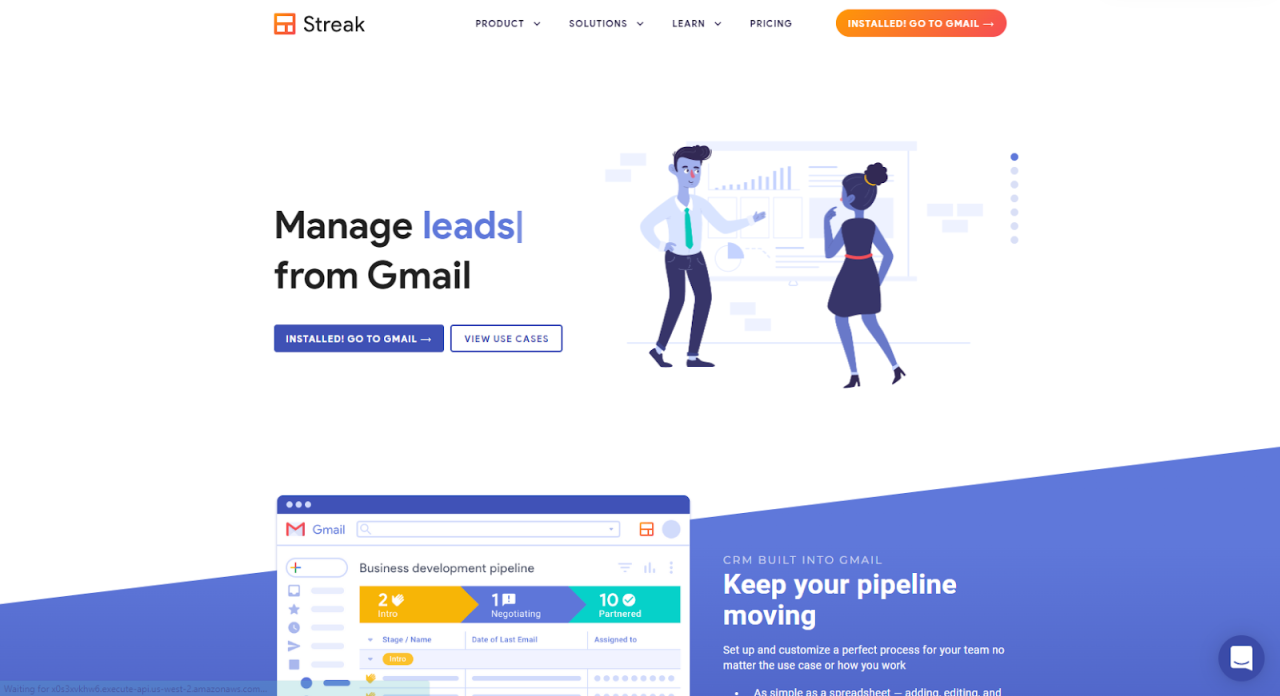
Choosing a CRM system is a long-term investment. Its ability to scale alongside your business is crucial for maintaining efficient contact management and overall operational effectiveness. A CRM that can’t adapt to your growth will eventually become a bottleneck, hindering productivity and potentially costing you valuable time and resources.A scalable CRM allows your business to seamlessly accommodate increasing numbers of contacts, users, and data without experiencing significant performance degradation or requiring a complete system overhaul.
This ensures consistent access to relevant customer information, enabling effective communication and informed decision-making even as your company expands. This is especially important for contact management, where the volume and complexity of data can grow exponentially.
Factors Influencing CRM Scalability
Evaluating a CRM’s long-term scalability requires careful consideration of several key factors. Ignoring these aspects could lead to costly migrations or limitations in the future.
- Data Storage Capacity and Performance: The CRM should offer sufficient storage capacity to handle your current and projected contact data volume. Consider the rate at which your contact database is expected to grow and ensure the chosen platform can comfortably manage this expansion without performance issues. For example, a company anticipating a tenfold increase in contacts within five years should prioritize a CRM with proven scalability in terms of data storage and retrieval speed.
A cloud-based solution often provides better scalability in this area compared to an on-premise system.
- System Architecture and Infrastructure: The underlying architecture of the CRM is vital for scalability. Cloud-based solutions generally offer superior scalability due to their flexible and easily expandable infrastructure. On-premise systems, on the other hand, require significant upfront investment and ongoing maintenance to ensure sufficient capacity. Consider the CRM’s ability to handle increased user traffic and concurrent access without performance bottlenecks.
A microservices architecture, for instance, offers better scalability compared to a monolithic architecture.
- API and Integration Capabilities: Robust API capabilities are crucial for integrating the CRM with other business systems and applications. As your company grows, you’ll likely need to integrate your CRM with marketing automation tools, sales platforms, customer support systems, and other applications. A CRM with a limited or poorly documented API will make integration challenging and potentially limit your scalability.
Seamless integration ensures data consistency and allows for automated workflows across different systems, crucial for managing a large and growing contact base.
Impact of Business Expansion on CRM and Contact Management
Future business expansion, such as opening new offices, launching new product lines, or entering new markets, will significantly impact your chosen CRM and its contact management capabilities. For example, a company expanding internationally will need a CRM that can handle multiple languages, currencies, and regulatory requirements. Similarly, launching a new product line may require adding new fields to your contact records to track customer interactions and preferences related to the new offering.
Failure to anticipate these needs and choose a sufficiently scalable CRM could lead to data silos, inconsistent processes, and ultimately, a fragmented customer experience. A scalable CRM will allow for seamless adaptation to these changes, ensuring consistent and efficient contact management across all business units and markets. For instance, a company expanding into a new region might require adding new user roles and permissions within the CRM to manage regional teams effectively.
A scalable system will easily accommodate these adjustments.
Illustrative Examples of Contact Management Processes
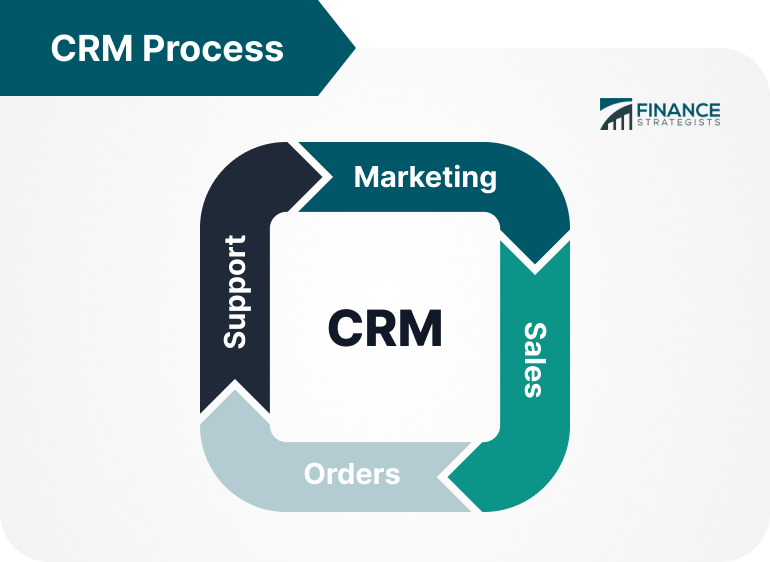
Effective contact management is crucial for business success. A well-implemented CRM system can streamline operations, improve customer relationships, and ultimately boost revenue. The following examples illustrate how a CRM can transform a company’s approach to managing contacts.
A mid-sized marketing agency, previously reliant on spreadsheets and email chains to track client interactions, experienced a significant improvement in efficiency after adopting a CRM system. The agency’s sales team struggled to maintain consistent communication and often missed crucial deadlines. Implementing a CRM with features like task automation, calendar integration, and shared contact profiles instantly addressed these issues.
The system allowed team members to collaborate seamlessly, ensuring all client communications were logged, tasks were assigned and tracked, and deadlines were met consistently. The improved organization reduced missed deadlines by 40% and increased client satisfaction scores by 20% within six months.
A Customer Journey Managed by a CRM System
A CRM system provides a holistic view of the customer journey, enabling businesses to personalize interactions and optimize their sales and marketing efforts. The following Artikels how a CRM manages contacts at each stage:
- Awareness: A potential customer interacts with the company’s website or social media. The CRM automatically logs this interaction, recording details such as the pages visited and the time spent on the site. This data informs future marketing efforts.
- Interest: The potential customer downloads a resource (e.g., a whitepaper) or signs up for a newsletter. The CRM updates the contact’s profile, adding them to a specific marketing list based on their expressed interest. Automated email sequences can be triggered to nurture this lead.
- Decision: The potential customer requests a demo or contacts the sales team. The CRM automatically alerts the relevant sales representative, providing them with the complete contact history and preferences. This ensures a personalized and informed sales interaction.
- Action: The customer makes a purchase. The CRM updates the contact’s status, records the transaction details, and automatically assigns follow-up tasks, such as scheduling a post-purchase check-in or sending onboarding materials.
- Loyalty: The CRM tracks customer interactions, purchases, and feedback, enabling personalized communications and targeted offers to retain the customer’s loyalty. It facilitates proactive support and identifies opportunities for upselling or cross-selling.
Contact Segmentation for Targeted Marketing
CRM systems allow businesses to segment their contacts based on various criteria, enabling targeted marketing campaigns with significantly higher conversion rates. This segmentation ensures that the right message reaches the right audience at the right time.
For example, an e-commerce company could segment its contacts based on purchase history, demographics, and website activity. They could then create targeted email campaigns: one for customers who frequently purchase a specific product offering discounts on related items, another for new customers offering a welcome discount, and a third for inactive customers offering a special promotion to re-engage them.
This approach increases campaign effectiveness by personalizing messaging and improving relevance. The ability to track campaign performance within the CRM further refines segmentation strategies over time, continually optimizing marketing ROI.
Final Summary
Selecting the best CRM for contact management is a significant decision impacting your business’s efficiency and growth. By carefully considering your specific needs, evaluating various platforms, and prioritizing features like seamless integration, intuitive design, and robust support, you can confidently choose a system that empowers your team and drives positive results. Remember to factor in scalability for future growth and consider the long-term impact on your contact management strategy.
The right CRM will not only streamline your processes but also foster stronger customer relationships and contribute significantly to your overall success.
FAQ Corner
What is the average cost of a CRM for contact management?
CRM pricing varies greatly depending on features, user numbers, and vendor. Expect to find options ranging from free plans with limited functionality to enterprise solutions costing thousands per month.
How long does it typically take to implement a new CRM?
Implementation time depends on the CRM’s complexity, data migration needs, and your team’s technical expertise. Simple setups might take weeks, while complex integrations could take months.
Can I integrate my CRM with other business tools?
Most modern CRMs offer integration with various tools like email marketing platforms, accounting software, and social media channels. Check specific CRM features for compatibility.
What type of training is available for CRM users?
Training options vary by vendor, ranging from online tutorials and documentation to in-person workshops and dedicated support teams. Look for comprehensive training resources to ensure smooth adoption.

